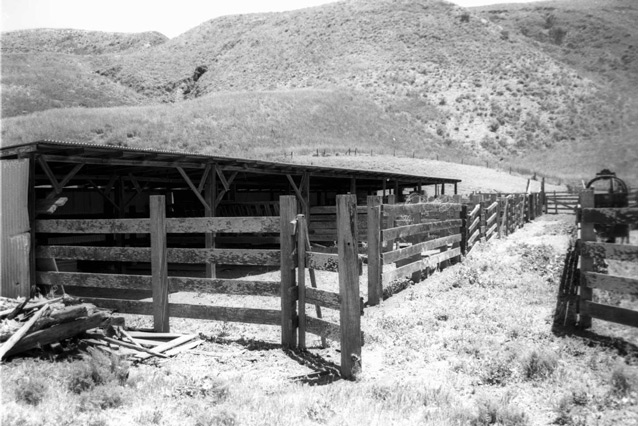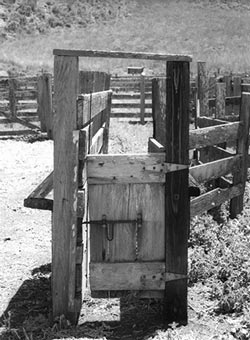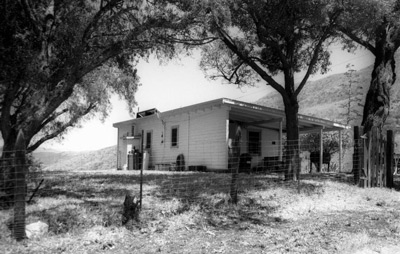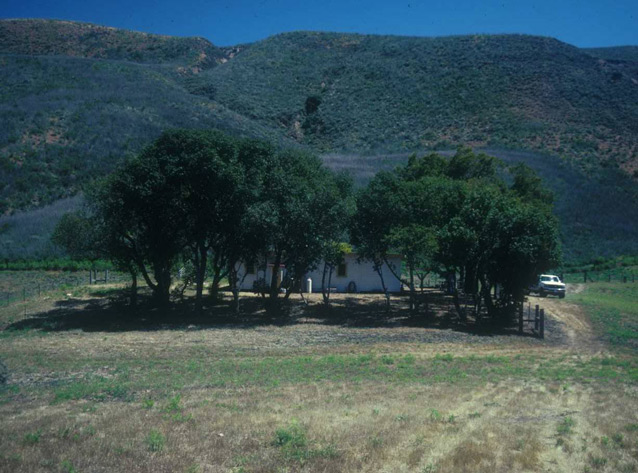Rancho del Norte is a component landscape of the Santa Cruz Island Ranching District. Although this particular ranch was constructed in 1952, the period of significance of the entire landscape begins in 1880 with widespread development of the island as a sheep ranch and winery. The island continued to be used as a unique and specialized location for livestock raising into the 1980s.
"Stanton announced himself as a new rancher resident of Santa Barbara, declared his intention of maintaining the island property as a great, typical, old-fashioned California ranch and got down to the business of stocking his little empire..." Article in the Santa Barbara News-Press, April 22, 1937

NPS

NPS
Rancho del Norte is an approximately 900-acre vernacular ranching landscape on the north side of Santa Cruz Island, the largest of the eight islands of Channel Islands National Park. It is a component landscape of the Santa Cruz Island Ranching District landscape, which comprises the entire island of Santa Cruz and includes properties owned by both The Nature Conservancy and the National Park Service.
The Rancho del Norte landscape is situated on a small, level area which drops off sharply into the ocean on the north side and meets steep slopes rising to the south. This cluster of corrals, troughs, fences, and a small residence forms a discrete isolated landscape on an already isolated island nineteen miles off the coast of southern California. Surrounded by a number of pastures overgrown with fennel, the ranch is accessed primarily by a single road to the southwest. It offers magnificent views of the channel to the northeast.
The contemporary ranch complex appears much as it did during the period of significance of 1880-1952, the end of which is the date Rancho del Norte was constructed. It retains the roads, structures, fence lines, corrals, and planted vegetation from the period, although the invasive fennel plants now cover almost all of the former pastureland in the area.
The period of significance of the Santa Cruz Island Ranching District begins with the full ownership of Justinian Caire and his widespread development of the island and a premier sheep ranch and winery. Sheep ranching was the primary land use by Caire and his sons, who occupied the island from 1880 to 1937. Active sheep ranching continued on the east end of the island until 1984.

NPS
Edwin Stanton bought a portion of the island in 1937, marking a shift in agricultural production on Santa Cruz Island. Through the 1940s, he converted the ranching operation from sheep to cattle. At the time, the beef industry in California was growing rapidly. Stanton developed Rancho del Norte as the focal point of cattle operations on the isthmus, continuing in many traditional ranching operations as well as in traditional uses of Prisoners Harbor and the historic livestock boat Santa Cruz.
Features that were essential to the operations of livestock ranches continue to define the building complexes of the historic district: residences and outbuildings, complex fencing systems that enclose pasture areas and transport corridors, water systems developed to accomodate the needs of ranchers, and a system of roads and trails.
Natural systems and features, spatial organization, vegetation, circulation, buildings and structures, cluster arrangement, views and vistas, topography, and small-scale features contribute to the ranching landscape. Land use, however, is not contributing as the land has not been grazed since 1987.

NPS
Quick Facts
- Cultural Landscape Type: Vernacular
- National Register Significance Level: Local
- National Register Significance Criteria: A, B
- Period of Significance: 1880-1952, 1890-1964, 1799-1861
Landscape Links
Last updated: November 18, 2020
